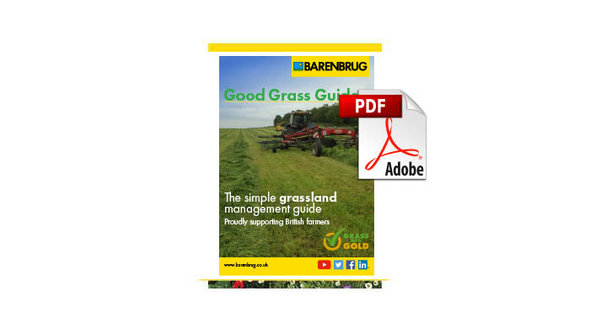Three grass silage production systems
Explore the three grass silage production systems in the UK – multi-cut, conventional and bales – and the benefits each one can bring to dairy farmers.

Explore the three grass silage production systems in the UK – multi-cut, conventional and bales – and the benefits each one can bring to dairy farmers.
Soil fundamentals
Maximising the yield across the land available begins with the soil and understanding the steps needed to improve the health and fertility and rectify areas that are underperforming, is an important starting point.
“Knowing what you want to achieve and getting to know your soil is an essential task,” says Mhairi Dawson from Barenbrug. “We know that good sward health starts with the soil and identifying poorly performing field areas and repairing these can lead to yield gains.”
“The soil feeds the grass, so expecting higher grass yields without the correct soil nutrition, structure or fertility is not going to work,” says Mhairi. “Once the soil is happy, we can start to look at our Good Grass Guide and how farms can tailor a species mix or consider techniques such as overseeding to the maximise output.”
This view on soil health is also echoed by soil testing specialists Eurofins Agro UK, who say that knowing where deficiencies are can help growers to adjust imbalances.
“Understanding the chemical, physical, and biological make up of soil will help monitor, manage and improve its health and fertility,” says Sophie Cath of Eurofins Agro UK. “Our Fertilisation Manager test measures soil fertility including the chemical values of macro and micronutrients, along with providing data on soil pH and structure in conjunction with biological components such as fungi and bacteria.
“The number and nature of the bacteria present in the soil sample will help accurately calculate what nutrients are needed to optimise plant health and growth,” concludes Sophie.
Choosing a system
Getting the right system for your farm can be dependent on several factors, including among others, geographical area, herd numbers and feeding system. There are three main silage harvesting systems commonly used in the UK – multi-cut, conventional and baled – and in this series we’ll dedicate an article to each.
A conventional silage system will be familiar to most growers and involves the first cut during May when the crop is thick but ideally before quality has dropped. There will then be one or two later cuts, depending on the growing season.
Multi-cut is still a relative newcomer in some areas but has grown in popularity with adopters realising that lighter, more regular cuts can offer improvements to silage quality. It promotes growers to cut up to seven times per season and bring the start date forward to late April in some places.
The final instalment will look at the benefits of big bale silage and why it is increasingly used in conjunction with one of the other methods as an alternative to later season cuts.
“All three systems require specialist machinery and making sure the machines are set up correctly is essential to maximising forage quality,” explains Katie Calcutt, product specialist at Kuhn Farm Machinery.
“A conventional 2/3 cut system produces thicker crops, so extra strain can be put on machinery to harvest when conditions might not be ideal. Investing in the right machinery for a certain system will allow growers to have flexibility when it comes to harvest.”
Areas such as sowing the correct grass ley to maximise yield or adding extra species to benefit the biodiversity areas should form an essential part of the management process.
Mhairi Dawson comments: “Getting the sward right before harvest starts is key as existing swards may not be the appropriate species or varieties, or in good enough heart, particularly where a significant change in system is adopted. Some varieties are suited to early spring growth so will favour a multi-cut system, whereas others could benefit areas with prevalent disease issues.”
Getting preservation right
Whether producing multi-cut, conventional or baled silage, the primary storage objectives are the same, says Ecosyl silage specialist, Peter Smith: lock in as much nutrient content as possible by producing a rapid, efficient fermentation that ‘pickles’ the grass to stop undesirable bacteria feeding on it.
“There are two aspects to this,” says Peter. “Firstly, you need the fermentation to lower the pH rapidly. That way, undesirable bacteria have minimum time to rob nutrients before they’re inhibited. If the pH falls slowly or doesn’t fall low enough, the bad bacteria continue feeding for longer and cause greater losses.
“Secondly, you want the fermentation process itself to be efficient, with good bacteria producing lactic acid. This is efficient because lactic acid is good at pickling, whilst requiring very little energy from the grass to produce it.
“In an inefficient fermentation, undesirable bacteria also produce other acids. These are weaker at preservation, use up DM when they’re produced, and are less palatable. So not only is the silage’s nutrient value reduced, but the cows don’t want to eat it,” he adds.
Other types of preservation are also important in higher DM silages where yeasts and moulds that cause heating are a problem, Peter notes.

Instantly download our Good Grass Guide and discover how to turn your grass into gold!